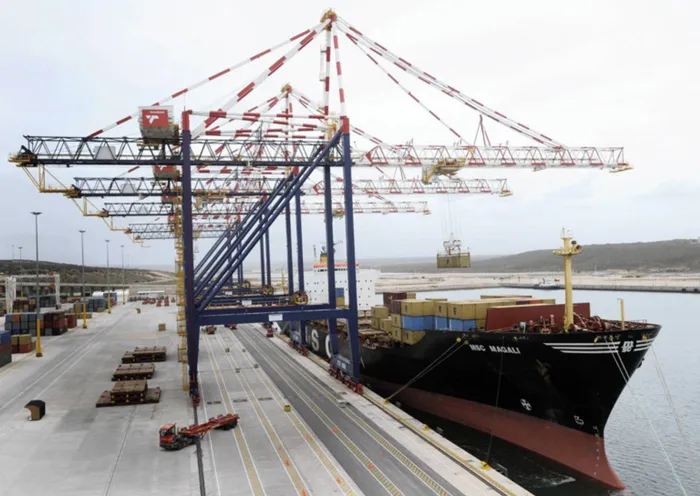
Ngqura Container Terminal (NCT) at the Port of Coega, established in 2009 as a Transnet Port AFRICAN PORTS EVOLUTION FORUM:Terminals (TPT) transshipment hub for the SADC region - now the fastest growing port and terminal in the world. PHOTO Supplied Ngqura Container Terminal (NCT) at the Port of Coega, established in 2009 as a Transnet Port AFRICAN PORTS EVOLUTION FORUM:Terminals (TPT) transshipment hub for the SADC region - now the fastest growing port and terminal in the world. PHOTO Supplied
Johannesburg - The gap between South Africa’s revenue from exports and the cost of its imports remained alarmingly high in September.
Data from the SA Revenue Service yesterday showed an R18.94 billion trade deficit, a little below the R19.1bn recorded in August but higher than the Bloomberg consensus forecast of R16.4bn.
The rand weakened on the news, breaching R10 to the dollar. At 5pm it was bid at R10.0111, for a loss of 13.79c from a day earlier.
A major casualty in the month was the sector that includes automotive exports, where the value of shipments fell by R4.4bn, or 58 percent. Car manufacturers were hit by direct strikes and supply was subsequently disrupted by stayaways at automotive component makers.
The cumulative trade deficit, at R126.37bn for the year, compares with R83.6bn in the same period last year, after exports rose 12.5 percent and imports climbed 17.8 percent in the year.
The import bill has been boosted by capital inputs for the state infrastructure programme, while exports have been weighed down by strikes and weak global demand.
The mounting trade deficit in the year will be compounded by the traditional deficit on the other leg of the current account: the services account. So the latest data imply that the current account deficit – equal to 6.5 percent of gross domestic product in the second quarter – will remain wide. A ratio between 3 percent and 4 percent is seen as acceptable; a higher ratio leaves the currency vulnerable to investment outflows.
Nedbank’s economic unit said the decline in exports in September was not surprising.
However, the bank predicted that export performance would pick up off a low base “as local production is normalised following recent closures of car assembly plants and some mines”.
It said a “significant improvement” would come only from the second quarter of next year, “provided the global environment is favourable and local production picks up”. - Business Report
